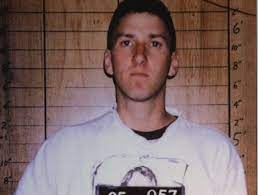Timothy McVeigh was executed by the Federal Government for the Oklahoma City Bombing that killed 168 people
According to court documents Timothy McVeigh and Terry Nichols would plan the Oklahoma City bombing for sometime. McVeigh and Nichols would create a large explosive device that was set in the back of a rental van. The van would be driven to the Alfred P. Murrah Federal Building where a two minute fuse was lit. When the bomb exploded it would destroy the building claiming 168 lives and injured 680 others
Timothy McVeigh would be arrested, convicted and sentenced to death
Timothy McVeigh would be executed by lethal injection on June 11 2001
Timothy McVeigh Photos

Timothy McVeigh FAQ
When Was Timothy McVeigh Executed
Timothy McVeigh was executed on June 11 2001
Timothy McVeigh Case
Despite an emotional last-minute plea from his parents, Timothy James McVeigh was sentenced to death Friday for his role in the worst case of terrorism in U.S. history — the Oklahoma City bombing. The seven-man, five-woman panel unanimously chose death by lethal injection for the 29-year-old Gulf War veteran, after deliberating for 11 hours over two days. Anything less than a unanimous verdict would have meant life in prison without parole. The jury also could have opted to send the case back to the judge and let him determine the sentence.
Penalty is for killing federal agents
The same federal jury who sentenced McVeigh convicted him of murder and conspiracy last week in the April 19, 1995, bombing of the Alfred P. Murrah federal building that killed 168 people. He was tried for conspiracy to commit the attack and for the deaths of eight federal law agents who were in the building when a massive diesel fuel-fertilizer bomb ripped the front off the nine-story building. McVeigh was charged along with his Army buddy Terry Nichols, who will be tried at a later date. Testimony for the penalty phase in McVeigh’s trial ended Wednesday, and deliberations began Thursday after the completion of closing arguments.
Jurors never heard from McVeigh himself during the four-day penalty phase of the trial. Instead, 27 witnesses were called to portray him as a friendly child and first-rate soldier who left the Gulf War disillusioned and restless. Supporting a contention made by the prosecution, the defense argued that the 1993 siege near Waco, Texas, became a source of bitter anger for McVeigh. About 80 members of the Branch Davidian cult were killed during a federal assault exactly two years before the Oklahoma blast.
At times, jurors were in tears
Prosecutors, citing vivid testimony from blast survivors and victims, argued that the blast was so lethal and destructive that McVeigh deserved death. Several prosecution witnesses brought jurors to tears with their accounts of mayhem, heroism and random death in Oklahoma City. Although all of the jurors, before they were selected, told the court they would be willing to consider the death penalty, Colorado juries have tended to be reluctant to sentence defendants to death. The state has five people on death row, and hasn’t executed anyone since 1967.
A passion for weapons
The trial was moved to Denver by U.S. District Judge Richard Matsch because he said McVeigh could not “obtain a fair and impartial trial at any place” in Oklahoma.
The son of a General Motors auto worker from a rural area near Buffalo, New York, McVeigh went on to become an Army platoon leader, serving in a Bradley Fighting vehicle during the Gulf War. After his return to the United States, he was discharged from the Army and took a series of odd jobs, drifting across the country and spending time with militia groups. Both sides offered testimony during the trial on his passion for weapons and his zealous opposition to gun control.
